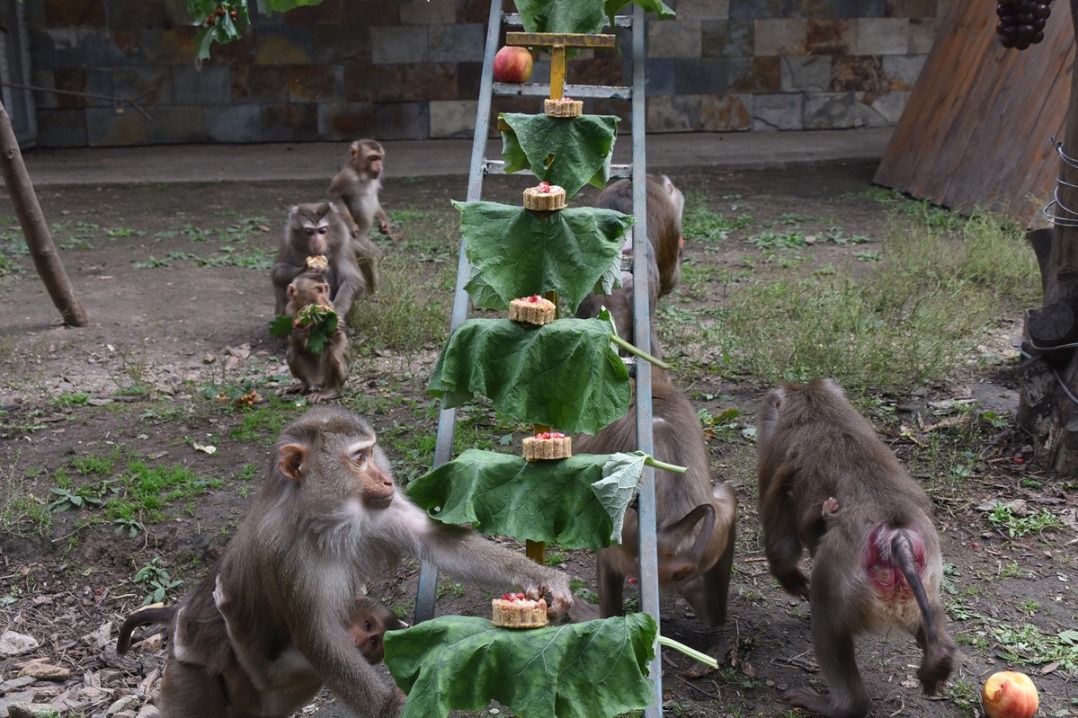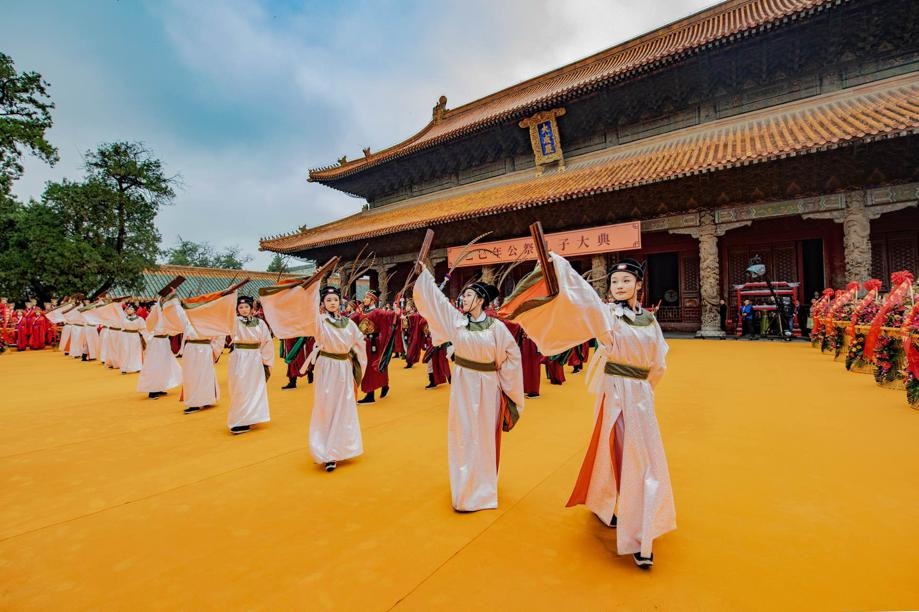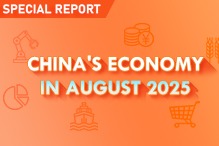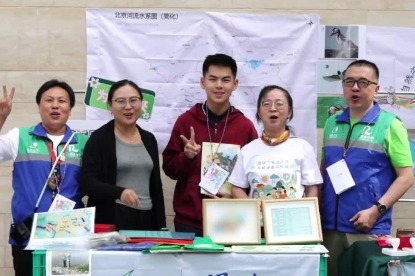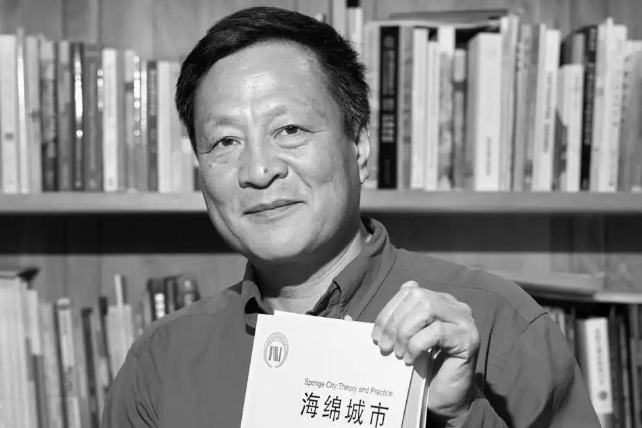China's Epic Journey from Poverty to Prosperity

Panel 8 A Substantial Rise in Living Standards for the Poor
Incomes have increased rapidly. The per capita disposable income of rural residents in poor areas reached RMB12,588 in 2020. This represents a compound annual growth rate of 9.2 percent in real terms from 2013 to 2020, 2.2 percentage points higher than the average growth for rural residents nationwide. Formerly impoverished households now have adequate food, clothing and bedding for every season and all weather conditions.
Their ability to keep themselves free from poverty has steadily increased. The government has created more jobs through multiple channels and carried out large-scale vocational skills training, helping over 30 million impoverished people to find jobs. In all, 93.8 percent of registered poor households have benefited from employment assistance policies. More than two thirds of registered poor people emerged from poverty by entering the workforce, and their number rose from 15.3 million in 2016 to 32.4 million in 2020.
Compulsory education is available for all school-age children. The 200,000 children from registered poor households who dropped out of compulsory education were all identified and helped back to school in a timely manner. The chronic dropout problem among the registered poor had thus been solved. In 2020, the nine-year compulsory education completion rate in poor counties reached 94.8 percent. Since 2012, a total of 5.1 million students from registered poor households have received higher education, with millions of these households seeing the first family member ever to attend a university. During this period, key universities recruited a total of 700,000 students from rural and impoverished areas through a targeted program.
Basic medical services are guaranteed for the poor. The three-tiered medical services system at village, township and county levels has been steadily improved. Measures have been taken to provide medical treatment to those with major illnesses, and ensure contracted health care for those with chronic illnesses. Almost all now have access to basic medical insurance, major illness insurance, and medical assistance. Under these arrangements, approximately 80 percent of the hospitalization and outpatient expenses for treating chronic or special illnesses can be reimbursed. These developments have increased the availability and lowered the cost of medical care and effectively reduced health-related poverty.
Safe housing has been guaranteed. Through a poverty-alleviation program to renovate substandard rural houses, 25.7 million poor from 7.9 million households have had their dilapidated dwellings renovated. Meanwhile, housing improvement assistance has been provided to 10.8 million rural households experiencing economic difficulties, including households entitled to subsistence allowances, people cared for in their homes with government support, and families with members suffering from disabilities. A total of 23.4 million registered poor households have moved into safe homes which are more comfortable and offer better protection against earthquakes and other natural disasters.
Access to safe drinking water has been ensured. An upgraded program to improve drinking water safety has been launched in rural areas, providing adequate supplies of drinking water that meet the relevant standards to 382 million people, including 28.9 million formerly living in poverty. Tap water coverage in poor areas increased from 70 percent in 2015 to 83 percent in 2020.
The battle against poverty has inspired people to strive for a better life and built up their confidence and determination. Those who have risen out of poverty are inspired to seek prosperity through hard work, self-reliance, thrift and entrepreneurship.
After eradicating absolute poverty, China has been conducting follow-up monitoring for those areas and people who have newly escaped poverty, and has set a grace period during which assistance and other supportive policies will continue. Through regular inspections and dynamic management, problems can be spotted as soon as they arise, and intervention and assistance can be carried out promptly. These areas have been equipped to generate their own capacity for development, and people recently emerging from poverty have been motivated to invest their own efforts, so that they will not fall back into poverty.
The rights of special groups to subsistence and development have been effectively guaranteed. Preferential policies have been adopted to reinforce support, improve their welfare, and increase their access to development opportunities.
The basic national policy of gender equality has been universally applied. Women have been a prioritized target group for poverty alleviation and reduction. China has adopted preferential policies, allocated funds, and implemented targeted measures to help poor women address their pressing problems. Women account for about half of the 99 million people who have emerged from poverty.
China has implemented the National Development Plan for Children in Poor Areas (2014-2020) to ensure the education and health of children in poor areas and make any necessary interventions. The Nutrition Improvement Program for Children in Poor Areas has been implemented. In 832 counties formerly classified as impoverished at national level, the government provides a free daily pack of dietary supplements rich in proteins, vitamins and minerals to every baby aged 6-24 months, benefiting a total of 11.2 million children. Volunteers have been organized to provide paired care and assistance to orphans, left-behind rural children, and other children in need. The government has strengthened the guarantees for the basic needs of orphans and improved care for all children in need.
China has promptly increased the premium of basic old-age insurance and pension for both urban and rural residents. A system of care and services for left-behind rural seniors has been established. Care for poor seniors who cannot carry out essential self-care has been strengthened. The government has ensured seniors' basic living standards and their access to essential services.
China has guaranteed basic needs and services for people with disabilities, helping more than 7 million poor disabled people out of poverty. Their special needs are now better met, and significant progress has been made in providing better nursing services for poor people with severe disabilities.
2. Integrated Urban-Rural Development
In a moderately prosperous society, urban-rural development is more balanced and people-oriented urbanization is advancing, while the salient problems of agriculture, rural areas and rural people are being addressed. The urban-rural divide is being narrowed, the development gap between urban and rural areas continues to shrink, and integration has increased. Like two wheels of a cart, urban and rural areas complement each other and advance side by side.
Rural areas are becoming increasingly prosperous. With the implementation of the rural revitalization strategy, agriculture is being upgraded, rural areas are developing, and rural people are experiencing improvements in every aspect of life. Agricultural modernization is accelerating, and the supply of grain and other important agricultural products has been secured. China's annual grain output has remained above 650 million tonnes for the last six years. Its output of fruits, vegetables, tea, meat, eggs and fish all rank top of the world. Its comprehensive agricultural production capacity has been steadily increasing, and the contribution of scientific and technological advances to agricultural production has surpassed 60 percent. The overall level of mechanization in tilling, sowing and harvesting has reached 71 percent. The Chinese Farmers' Harvest Festival has been created so that farmers have their special day. The grain-dominated agricultural economy has been replaced with a more diverse rural economy featuring agriculture, forestry, animal husbandry and fisheries, and integrated development of primary, secondary and tertiary sectors. The roles of agriculture and rural areas continue to expand. Emerging industries and new business forms, such as eco-agriculture with distinct local characteristics, rural e-commerce, rural tourism, leisure agriculture, cultural experiences, and health care for seniors, are growing faster and bringing all-round development to the rural economy.
Rural infrastructure has been strengthened. Almost all administrative villages have access to surfaced roads, three-phase electric power, and 4G cellular networks. Rural logistic services are steadily improving. Express delivery stations have been set up in every town and township; they are spreading quickly into villages. More and more villages have purified water sources, surfaced roads, street lighting, clean energy, and a beautiful environment (Panel 9). The modernization of rural houses and villages is continuing, and the "toilet revolution" has produced obvious results. Many remote and once-impoverished villages have been completely transformed. Graced with village parks and home gardens, they have become better places to live and work in.
Illiteracy among rural youth and the middle-aged has been eliminated. Nine-year compulsory education has been consolidated, with the quality improving steadily. Rural people are significantly better educated. The Healthy Villages program has been rolled out, and village clinics have become more standardized and their health management ability has improved. The health level and life expectancy of rural residents have significantly increased. Rural cultural activities have become more colorful, and villagers can enjoy the facilities in rural reading rooms, cultural halls and fitness spaces.
Rural people are more open-minded, and are increasingly familiar with modern concepts such as innovation, science and technology, law and the market. They now pursue scientific, healthy and civilized new ways of life which are simple, thrifty, eco-friendly, and hygienic. Good social practices, including modest weddings and funerals, practicing filial piety, and helping the needy, the weak and the disabled, have been promoted. A new society blending rural traditions with modern style is taking shape. More beautiful, harmonious, livable and flourishing villages across the country are benefiting from a cleaner environment. The goals to make agriculture strong, rural areas beautiful, and rural people prosperous are being realized.
- Hong Kong residents snap up tickets to tour PLA Navy ships
- Domestic, overseas holiday bookings see strong growth
- CPC Central Committee to hold plenum
- Xi: Further adapt religions to Chinese context
- Greece shares flavor of top alcoholic exports at expo
- Holiday travelers urged to give safety top priority

















